Don’t Be Fooled!
Before lecturing Republicans, Democrats should mop up their side of the political spectrum [with regard to the issue of race].
—Journalist Deroy Murdock (who, by the way, is black)—
Note: In Part 6, we began to record some historical facts Democrats have hidden from the public or effectively encouraged the public to ignore. We added to the list in Part 7, and this week, in Part 8, we complete it. The list contains 33 items. It isn’t exhaustive by any means, but it is thorough and very informative. It’s available on a single page here.
Links to all the articles in this series are available here.
The second Sunday after a congregation had welcomed a new pastor into its midst, churchgoers noticed he preached the very same sermon he’d given a week earlier. The next week, he preached the same sermon yet again. When his people asked him why he was doing this, the pastor replied, “When you begin to apply the principles in this sermon, I’ll be happy to move on to the next one.”
As we continue adding items to our list of historical truths Democrats conveniently overlook, some may feel we are being repetitious, even though we’ve been adding new items every week. Unlike the new preacher who kept preaching the same sermon, I believe you’re getting it. Democrats, generally speaking, have rewritten history and are overlooking their own racist past. There are exceptions, but overall, Democrats have a history that upholds racism.
The eleventh item on our list (see last week’s post) highlighted Republican attempts to make lynching a federal crime in 1922, 1923, and 1924—and Democrat efforts to thwart them. Southern Democrats in the US Senate successfully filibustered the bill. Looking back a few years may shed some light on why these Democrats’ efforts could succeed.
Historical Truths Democrats Have Successfully Concealed
Twelfth, Woodrow Wilson, the 28th President of the United States from 1913 to 1921, was a Democrat who promoted and adopted racist policies and who glorified the Ku Klux Klan. Under Wilson, the federal government resegregated numerous agencies in the US government. Yes, resegregated. Integration had taken place during Reconstruction decades before Wilson took office. Wilson “brought with him an administration loaded with white supremacists who segregated offices and removed black men from political appointments.” In 1914 President Wilson defended these policies, saying this:
Segregation is not humiliating but a benefit, and ought to be so regarded by you gentlemen. If your organization goes out and tells the colored people of the country that it is a humiliation, they will so regard it, but if you do not tell them so, and regard it rather as a benefit, they will regard it the same. The only harm that will come will be if you cause them to think it is a humiliation… If this organization is ever to have another hearing before me it must have another spokesman. Your manner offends me…
Of course, Wilson’s policies affected people on a personal level. One man affected was John Abraham Davis. John Davis was a hard worker and excelled in school. Not long after graduating from high school in 1882 he landed a job at the Government Printing Office in Washington, DC. His job became his career. John was rewarded for his hard work with promotions and pay increases, and by 1908 he had a very respectable income as well as a home in the nation’s capital and a farm in a nearby state. Everything changed for John after Wilson took office. He was demoted, then sent from one department to another to do jobs that required little skill or experience. In the end he wound up delivering messages in the War Department, but that job paid only about half of what he had been earning in 1908. John was forced to sell the farm, and by 1917 his spirit had been crushed. He’d live for eleven more years but could not recover from the humiliation and economic ruin Wilson’s racist policies had brought upon him. Not surprisingly, other black men in government jobs had similar experiences.
Moreover, Woodrow Wilson spoke glowingly of the Ku Klux Klan. In 1901 in his book, A History of the American People, Volume IX, Wilson wrote, “Those who loved mastery and adventure directed the work of the Ku Klux.” He also wrote, “The white men of the South were aroused by the mere instinct of self-preservation to rid themselves, by fair means or foul, of the intolerable burden of governments sustained by the votes of ignorant negroes and conducted in the interest of adventurers.” The quote inspired this frame in the racist movie The Birth of a Nation, a silent movie directed by by D. W. Griffith and released in 1915. The film was successful and was a factor leading to a resurgence of the Klan, which also took place in 1915.
On another issue, Wilson is seen today as a leader promoting women’s suffrage. Not so fast! He and other Democrats actually had no choice but to go along with passage of the Nineteenth Amendment after landslide wins for Republicans in Congress in the election of 1918. On May 21, 1919, the Nineteenth Amendment passed the House of Representatives. The vote was 304-89. Ninety-one percent of Republicans but just 59 percent of Democrats voted for it. The Senate passed the amendment on June 4 of the same year by a vote of 56-25. Eighty-two percent of Republicans but just 41 percent of Democrats voted for it. On to the states it went, and Tennessee became the 36th state to ratify the amendment on August 26, 1920. Tom Wrutz writes, “Of the 36 states to ratify the 19th Amendment, 26 were Republican states [states with Republican legislatures].”
Suffragist demonstration in 1913 in Washington, DC
Thirteenth, the Democrat Convention in 1924 was called Klanbake because of the controversy that swirled around it involving the Ku Klux Klan. No political convention in US history has lasted as long as did this one. From June 24 to July 9, 1924, delegates cast a total of 103 ballots before officially nominating John W. Davis and Charles W. Bryan to run for president and vice-president, respectively. They would be defeated by Calvin Coolidge and Charles G. Dawes in November.
1924 Democrat Convention
Going into the convention, observers probably would have put their money on either Al Smith of New York or William Gibbs McAdoo, who had served as the Secretary of the Treasury in the Wilson administration and who would go on to serve as a Democrat US Senator from California. Davis became the compromise candidate.
Not all Democrats supported the revived KKK, and some wanted the party’s platform to condemn Klan for its violent activities. A plank was proposed. Pro-Klan delegates opposed Al Smith’s candidacy (Smith was a Catholic) and supported the candidacy of his chief opponent, William McAdoo (a Protestant). The convention was deeply divided. Writing about the proceedings, Randy Dotinga seasons his report with quotes from Robert K. Murray, a historian.
The vicious KKK debate finally ended in a chaotic two-hour vote that produced the most “prolonged pandemonium in an American political gathering.”
“The delegates engaged in fist fights, arguments, name calling, wrestling matches, and brawls, while the galleries howled and stomped their feet.” The fighting veered toward a riot that was only averted when 1,000 NYC cops hurried to the scene.
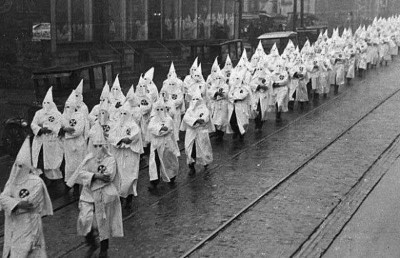 Debate over adopting the anti-Klan plank was fierce. In the end, the plank was rejected by a vote of 546.15 to 542.85. In Celebration, “tens of thousands of hooded Klansmen rallied in a field in New Jersey, across the river from New York City. This event…was also attended by hundreds of Klan delegates to the convention, who burned crosses, urged violence and intimidation against African Americans and Catholics, and attacked effigies of Smith.”
Debate over adopting the anti-Klan plank was fierce. In the end, the plank was rejected by a vote of 546.15 to 542.85. In Celebration, “tens of thousands of hooded Klansmen rallied in a field in New Jersey, across the river from New York City. This event…was also attended by hundreds of Klan delegates to the convention, who burned crosses, urged violence and intimidation against African Americans and Catholics, and attacked effigies of Smith.”
Fourteenth, Democrat Hugo Black, who was a US Senator from Alabama from 1927 to 1937, was a member of the Ku Klux Klan. After being elected to his seat in the Senate in 1926, Black spoke to a KKK gathering and thanked them for their support:
This passport which you have given me is a symbol to me of the passport which you have given me before. I do not feel that it would be out of place to state to you her on this occasion that I know that without the support of the members of this organization I would not have been called, even by my enemies, the “Junior Senator from Alabama.”
As a US Senator, Black strongly opposed anti-lynching legislation, even when the sponsors of the bill also were Democrats.
In 1935 Black led a filibuster of the Wagner-Costigan anti-lynching bill. The Pittsburgh Post Gazette reported that when a motion to end the fillibuster was defeated “[t]he southerners- headed by Tom Connally of Texas and Hugo Black of Alabama—grinned at each other and shook hands.”
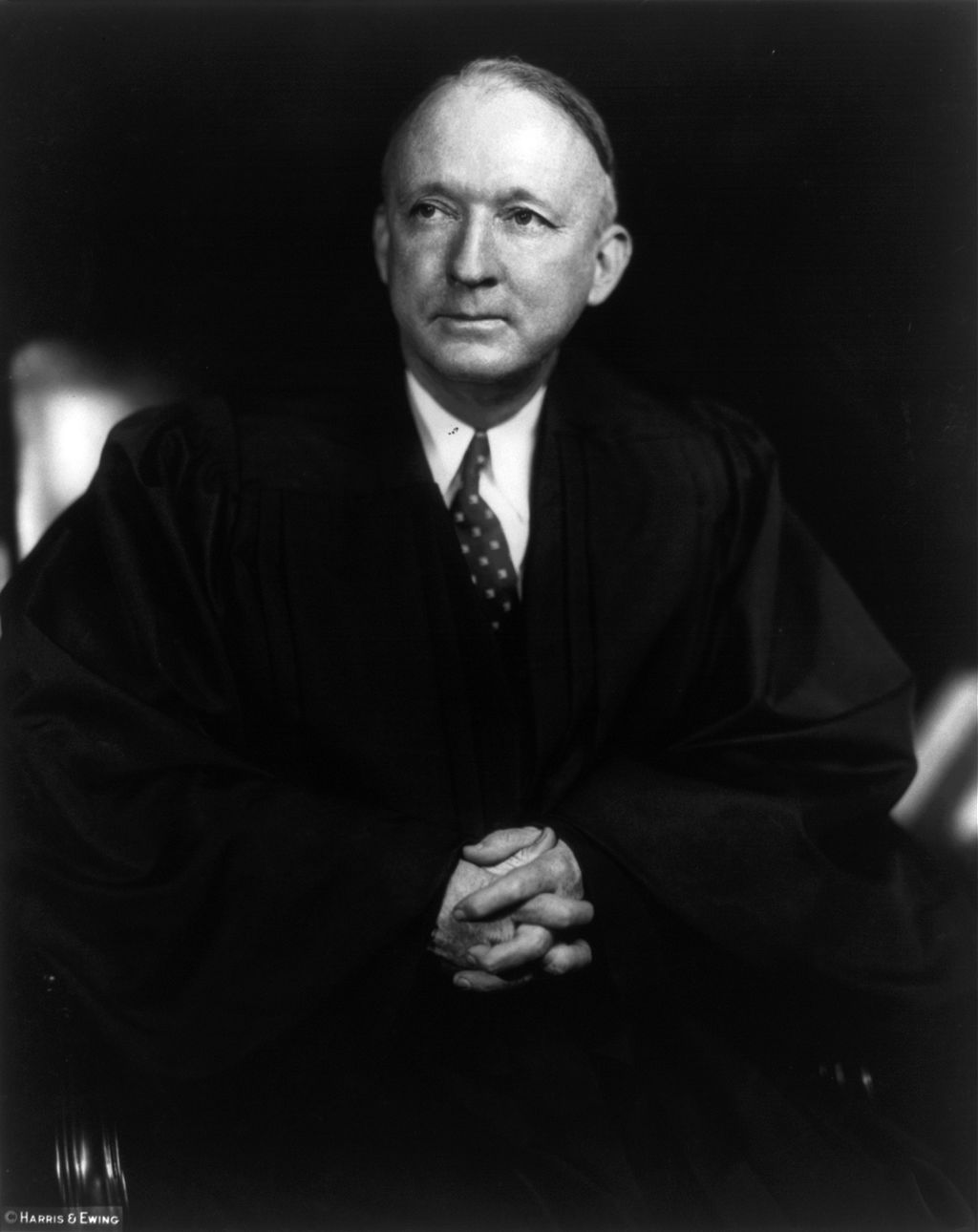
Fifteenth, Franklin Delano Roosevelt appointed Hugo Black to the Supreme Court in 1937. He was an Associate Justice on the Supreme Court from August 19, 1937 until just September 17, 1971, just days before his death. Shortly after Black became an Associate Justice, reporter Ray Sprigle of the Pittsburgh Post-Gazette wrote a story disclosing Black’s involvement in the KKK. The report caused quite a stir, and Sprigle won a Pulitzer Prize for his work. As a Supreme Court Justice, Black “went on to reintroduce America to the long-dormant phrase ‘separation of church and state, twisting its meaning. Black also wrote the majority opinion that deemed internment camps in the United States constitutional in 1944.”
Sixteenth, in 1938, during a filibuster of the Wagner-Van Nuys anti-lynching bill—a bill, by the way, bearing the names of two Democrat senators, Robert Wagner and Frederick Van Nuys— Mississippi Senator Theodore Bilbo, also a Democrat, declared,
If you succeed in the passage of this bill, you will open the floodgates of hell in the South. Raping, mobbing, lynching, race riots, and crime will be increased a thousandfold; and upon your garments and the garments of those who are responsible for the passage of the measure will be the blood of the raped and outraged daughters of Dixie, as well as the blood of the perpetrators of these crimes that the red-blooded Anglo-Saxon White Southern men will not tolerate.
Seventeenth, in 1941, Franklin Delano Roosevelt appointed James Byrmes to the US Supreme Court. Byrmes was a segregationist who in 1919 said, “This is a white man’s country, and will always remain a white man’s country.”
Eighteenth, FDR committed racist acts and failed to defend races who were vulnerable.
- In 1942, internment camps were established by Executive Order 9066 to house American citizens descended from Japanese and Japanese expatriates.
- Jesse Owens had defied the propaganda of Adolf Hitler and Nazi Germany by winning four gold medals on German soil, at the Berlin Olympics of 1936. After the games, FDR invited only the white athletes to meet with him. Of course, Owens received no such invitation.
FDR invited only white athletes to meet with him following the 1936 Olympics in Berlin.
- While Roosevelt was critical of lynching, he would not support a federal anti-lynching law. He said Southern Democrats, especially Senators, would retaliate by blocking other bills Roosevelt supported that were essential for the country’s survival: “If I come out for the anti-lynching bill now, they will block every bill I ask Congress to pass to keep America from collapsing. I just can’t take that risk.”
- FDR also has been accused of not doing enough to help the Jews during the Holocaust and World War 2.
Ninteenth, evangelist Billy Graham led a crusade in Jackson, Mississippi in 1952. Graham’s policy was clear regarding race—members of all races would be welcome at his events. Mississippi Democrat Governor Hugh White didn’t like the policy and asked Graham to schedule different services for white and black audiences. Graham refused, although he did, at the Jackson Crusade, allow segregated seating. Several months later, in Chattanooga, Tennessee, Graham vehemently resisted the call for segregated seating. In Jackson, Graham proclaimed, “There is no scriptural basis for segregation. It may be there are places where such is desirable to both races, but certainly not in the church. The ground at the foot of the cross is level.…[I]t touches my heart when I see whites stand shoulder to shoulder with blacks at the cross.”
Billy Graham in 1966
Twentieth, In 1956, a document was drafted in the US Congress called “The Declaration of Constitutional Principles” or simply the “Southern Manifesto.” In it, 101 political leaders expressed their opposition to racial integration in public facilities and venues, including schools. Ninety-nine of the leaders were Democrats and two were Republicans. One signatory to the document was J. William Fulbright, Senator from Arkansas and eventual mentor to Bill Clinton. Fulbright has been described as a racist, a “notorious segregationist,” pro-communist, and anti-Semitic. Recently, “the famous Fulbright fellowship…[was] renamed…the “J. William Fulbright–Hillary Rodham Clinton Fellowship.”
Former Democrat Arkansas Senator J. William Fulbright has been described as a racist, a “notorious segregationist,” pro-communist, and anti-Semitic. Recently, “the famous Fulbright fellowship…[was] renamed…the “J. William Fulbright–Hillary Rodham Clinton Fellowship.”
Twenty-first, Bruce Bartlett, author of Wrong on Race: The Democratic Party’s Buried Past,” explains that Republican President Dwight Eisenhower repeated his call for civil rights legislation in his 1957 State of the Union address. Previously, the legislation had passed in the House but had died in the Senate because of opposition from Southern Democrats. Lyndon B. Johnson was the Senate’s Majority Leader. Opponents of the legislation were looking to him to oppose it, just as he had in the past. (While a congressman, Johnson had called President Harry Truman’s civil rights initiative “a farce and a sham—an effort to set up a police state in the guise of liberty. I am opposed to that program. I have voted against the so-called poll tax repeal bill…I have voted against the so-called anti-lynching bill.”) Johnson, however, wanted to become president. Bartlett continues,
After dragging his feet on the civil rights bill throughout much of 1957, Johnson finally came to the conclusion that the tide had turned in favor of civil rights and he needed to be on the right side of the issue if he hoped to become president.…
At the same time, the Senate’s master tactician and principal opponent of the civil rights bill, Democrat Richard B. Russell of Georgia, saw the same handwriting on the wall but came to a different conclusion. He realized that the support was no longer there for an old-fashioned Democrat filibuster.…So Russell adopted a different strategy this time of trying to amend the civil rights bill so as to minimize its impact. Behind the scenes, Johnson went along with Russell’s strategy of not killing the civil rights bill, but trying to neuter it as much as possible.…
Eisenhower was disappointed at not being able to produce a better piece of legislation. “I wanted a much stronger civil rights bill in ’57 than I could get,” he later lamented. “But the Democrats…wouldn’t let me have it.”
Johnson explained his approach this way:
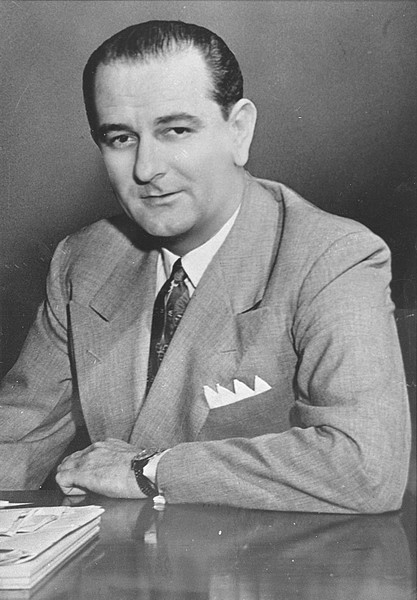 These Negroes, they’re getting pretty uppity these days and that’s a problem for us since they’ve got something now they never had before, the political pull to back up their uppityness. Now we’ve got to do something about this, we’ve got to give them a little something, just enough to quiet them down, not enough to make a difference. For if we don’t move at all, then their allies will line up against us and there’ll be no way of stopping them, we’ll lose the filibuster and there’ll be no way of putting a brake on all sorts of wild legislation. It’ll be Reconstruction all over again.
These Negroes, they’re getting pretty uppity these days and that’s a problem for us since they’ve got something now they never had before, the political pull to back up their uppityness. Now we’ve got to do something about this, we’ve got to give them a little something, just enough to quiet them down, not enough to make a difference. For if we don’t move at all, then their allies will line up against us and there’ll be no way of stopping them, we’ll lose the filibuster and there’ll be no way of putting a brake on all sorts of wild legislation. It’ll be Reconstruction all over again.
Forgive the language—I’m just reporting what was said. On Air Force One, President Johnson was speaking to two like-minded governors and explaining some of the benefits Democrats would reap from his “Great Society” programs. Johnson said, “I’ll have those niggars voting Democrat for the next 200 years.”
Twenty-second, In 1958, Billy Graham planned a rally on the steps of South Carolina’s capitol building. South Carolina Democrat Governor George Timmerman objected and successfully nixed the plans to hold the rally at the capitol. Graham was viewed as an “integrationist.” In fact, the KKK had listed Billy Graham as one of their targets in 1957. Governor Timmerman said, “There is, in fact, no reason to select the State House unless the real purpose is to capitalize, for propaganda, purposes, on the appearance of a widely known advocate of desegregation. It is Graham’s endorsement of desegregation that has brought him front-page acclaim.” Brig. General Christian H. Clark helped make Fort Jackson, which was a federal venue, available, and the rally was held there. As many as 60,000 people of different races attended, and the meeting was “described at the time as the largest turnout for a non-sporting event in state history.”
Twenty-third, in 1962 George C. Wallace, then a Democrat, was elected Governor of Alabama. He was inaugurated on January 14, 1963.
In his inauguration speech he proclaimed, “In the name of the greatest people that have ever trod this earth, I draw the line in the dust and toss the gauntlet before the feet of tyranny, and I say segregation now, segregation tomorrow, segregation forever!”
Twenty-fourth, Dr. Martin Luther King, Jr. was a Republican.
Dr. Martin Luther King, Jr., delivering his “I Have a Dream” speech on the steps of the Lincoln Memorial in Washington, DC on August 28, 1963
The top image is a photo of the crowd attending that event.
Twenty-fifth, Contrary to the assumptions of many today, Republicans passed the Civil Rights Act of 1964.
- In the House of Representatives, 80 percent of Republicans voted for the measure, while just 61 percent of Democrats voted for it.
- In the Senate, Republicans were at last able to end a filibuster brought by Democrats. Eighty-two percent of Republicans supported cloture along with just 66 percent of Democrats.
- In the vote on the legislation itself, 82 percent of Republicans and 69 percent of Democrats gave their support.
Twenty-sixth, Surprise, surprise! The Voting Rights Act of 1965 also became law largely because of Republicans.
- Ninety-four percent of Republicans in the US Senate supported the Voting Rights Act, contrasted to 73 percent of Democrats.
- When the Senate voted on the final version of the bill from the House, one lone Republican Senator opposed it, along with 17 Democrats.
- In the House of Representatives, 82 percent of Republicans and 78 percent of Democrats voted for the legislation.
 Republican Illinois Senator Everett Dirksen was a co-author of the legislation, and he strategized against opposition brought by Democrats. He said, “There has to be a real remedy. There has to be something durable and worthwhile. This cannot go on forever, this denial of the right to vote by ruses and devices and tests and whatever the mind can contrive to either make it very difficult or to make it impossible to vote.”
Republican Illinois Senator Everett Dirksen was a co-author of the legislation, and he strategized against opposition brought by Democrats. He said, “There has to be a real remedy. There has to be something durable and worthwhile. This cannot go on forever, this denial of the right to vote by ruses and devices and tests and whatever the mind can contrive to either make it very difficult or to make it impossible to vote.”
The Civil Rights Act of 1964 and the Voting Rights Act of 1965 became law largely because of the work of Republicans.
Twenty-seventh, Lester Maddox was elected governor of Georgia in 1970 and was a Democrat at the time. An ardent segregationist, Maddox once said, “That’s part of American greatness, is discrimination. Yes, sir. Inequality, I think, breeds freedom and gives a man opportunity.”
 Twenty-eighth, In 1989, the NAACP sued three state officials, including then-Arkansas Democrat Governor Bill Clinton, under the Voting Rights Act of 1965, a federal statute. According to the Arkansas Gazette on December 6, 1989, “Plaintiffs offered plenty of proof of monolithic voting along racial lines, intimidation of black voters and candidates and other official acts that made voting harder for blacks.” The paper also said that “the evidence at the trial was indeed overwhelming that the Voting Rights Act had been violated.” The court ordered the redrawing of electoral districts to enhance the strength of votes from the black community.
Twenty-eighth, In 1989, the NAACP sued three state officials, including then-Arkansas Democrat Governor Bill Clinton, under the Voting Rights Act of 1965, a federal statute. According to the Arkansas Gazette on December 6, 1989, “Plaintiffs offered plenty of proof of monolithic voting along racial lines, intimidation of black voters and candidates and other official acts that made voting harder for blacks.” The paper also said that “the evidence at the trial was indeed overwhelming that the Voting Rights Act had been violated.” The court ordered the redrawing of electoral districts to enhance the strength of votes from the black community.
Writing at nationalreview.com, Deroy Murdock reports,
During his 12-year tenure, Governor Clinton never approved a state civil-rights law. However, he did issue birthday proclamations honoring Confederate leaders Jefferson Davis and Robert E. Lee. He also signed Act 116 in 1987. That statute reconfirmed that the star directly above the word “Arkansas” in the state flag “is to commemorate the Confederate States of America.” Arkansas also observed Confederate Flag Day every year Clinton served. The governor’s silence was consent.
Also, examples of merchandise from Bill Clinton’s presidential run in 1992 have appeared that reflect Confederate sympathies.
Twenty-ninth, As a presidential candidate in 2000, Al Gore declared to the NAACP that his father was voted out of office after voting for the Civil Rights Act in 1964. The Senior Gore, however, opposed the Civil Rights Act and voted against it. In 1970, Gore, Sr. lost to Republican Bill Brock in a contest that centered on the Supreme Court, the war in Viet Nam, and prayer in public schools. Also in 2000, Gore claimed to have worked to increase diversity among those who followed him every day, including the Secret Service; but blacks in the Secret Service were suing Gore because they “were not being promoted to positions guarding the Vice-President.”
 Thirtieth, in a National Review article titled “Whitewashing the Democratic Party’s History,” Mona Charen writes, “As recently as 2010, the Senate’s president pro tempore was former Ku Klux Klan Exalted Cyclops Robert Byrd (D., W.Va.).” Go here to learn more about this KKK role.
Thirtieth, in a National Review article titled “Whitewashing the Democratic Party’s History,” Mona Charen writes, “As recently as 2010, the Senate’s president pro tempore was former Ku Klux Klan Exalted Cyclops Robert Byrd (D., W.Va.).” Go here to learn more about this KKK role.
During World War 2, Byrd wrote, “I shall never fight in the armed forces with a Negro by my side. … Rather I should die a thousand times, and see Old Glory trampled in the dirt never to rise again, than to see this beloved land of ours become degraded by race mongrels, a throwback to the blackest specimen from the wilds.” Go here to view a brief timeline of Byrd’s actions with regard to race relations.
Thirty-first, Barak Obama has increased racial tensions in this country since becoming president. One glaring manifestation of this truth that if you’re opposed to his policies, you’re accused of racism. Check out articles here, here, here, and here.
This president is the most racist president there has ever been in America. He is purposely trying to use race to divide Americans.
—Ben Stein, speaking of President Barak Obama—
Thirty-second and finally, Hillary Clinton apparently has garnered support from people willing to embrace the Confederate flag (also go here). While a candidate can’t control who supports him or her, the candidate can disavow attitudes of prominent supporters with whom he or she disagrees.
Hillary Clinton does not have the best track record with regard to race, especially when one considers her husband’s policies when he was Governor of Arkansas. Yet she has been quick to accuse Republicans of racism.
In fact, accusations of racism among Republicans has become a Democrat mantra.
You see, Democrats don’t just rewrite the past, they misrepresent the present, too.
Part 9 is available here.
Copyright © 2016 B. Nathaniel Sullivan. All rights reserved.
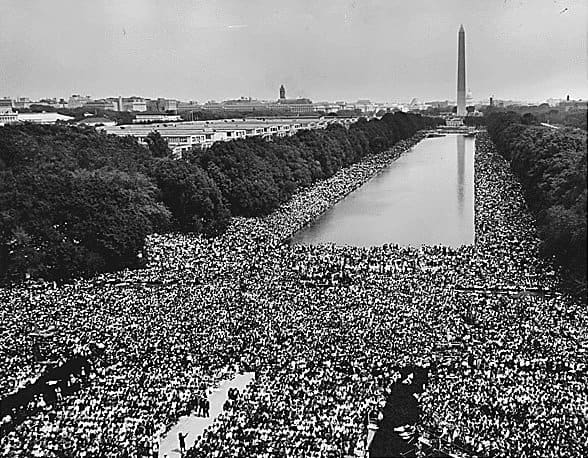



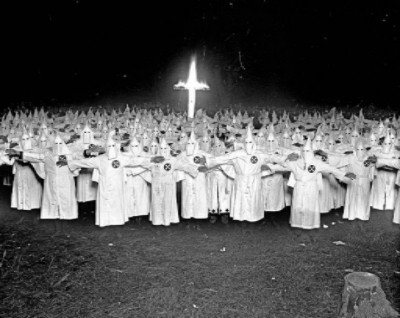








Be First to Comment